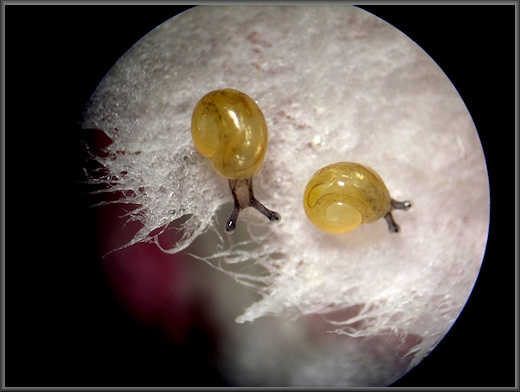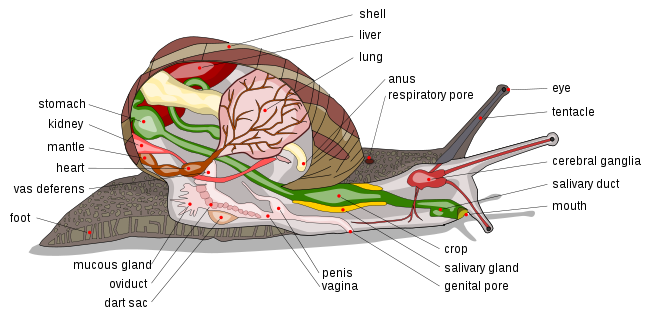Reproduction
Millerelix jacksoni, like most other land snails can reproduce sexually if they find a partner. Most land snails, Pulmonata snails, are hermaphrodites and it is rare when they mate with another snail because they move slowly. Land snails can't see very well and use their antennae to receive chemical signals and sense objects that are around them (Hotopp, 2006). When two potential partners meet they do some courtship behaviors where they crawl around each other and touch, this may take a few hours (Hotopp, 2006). After the ritual they get close together so that their genital pores are close and fertilize each other (Hotopp, 2006).
Helix aspersa, a relative snail that reproduces sexually with two individuals if a partner is found and is also hermaphroditic, lies eggs in holes that the parent digs in protected areas (Hotopp, 2006). The eggs develop over a course of a few weeks and then eventually hatch (Hotopp, 2006). When they hatch they are completely transparent, shell and all (Hotopp, 2006). Snails have a direct life cycle and they look like tiny adult snails. A direct life cycle means that they go from a juvenile, that looks like a small adult, to an adult as they grow (Hickman et al, 2012). The picture below represents what hatchlings would look like, small adults and clear.
Since Pulmonata snails are hermaphroditic they can mate with themselves if they need to (Hickman et al, 2012). They have both male parts for reproduction and female parts for reproduction as you can see in the picture below.

